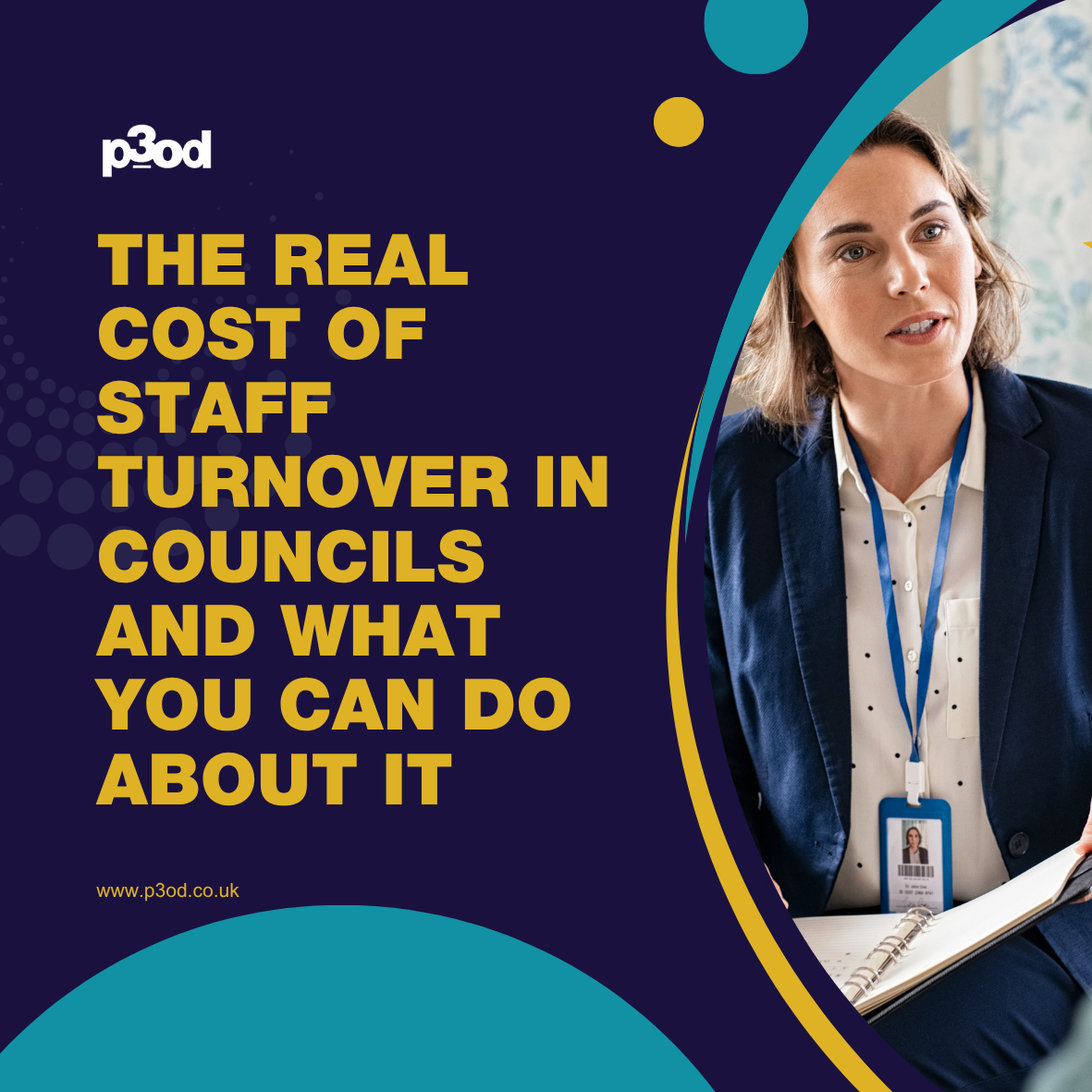
If you work in a council, especially in Children and Families Services you don’t need stats to tell you there’s a retention crisis, you feel it every time a valued social worker hands in their notice.
You’ve just trained up a brilliant team leader or first line manager and six months later, they’re gone. The pressure’s back on your stretched team, projects stall, and you’re back at square one.
But the hidden cost? That’s what’s quietly hurting your budgets, your teams, and your ability to deliver. And for anyone working in HR in local government supporting children’s social care, it’s the issue that won’t go away. Despite the best efforts of local agreements on use of agency workers, market supplements and golden hellos.
The financial impact of losing critical staff
Replacing a single employee in the UK can cost around £30,000, once you factor in recruitment, onboarding, lost productivity, and temporary cover. Now multiply that across an entire department, and the numbers become unsustainable. Forcing unavoidable year on year overspends.
Within local government, the scale is even more serious:
The Institute for Government estimates that excessive turnover in the civil service alone costs between £36 million and £74 million annually, once recruitment, training, and lost productivity are accounted for (Institute for Government).
According to the Local Government Association, councils are projected to spend approximately £292 million on agency staff in the 2023/24 financial year, highlighting the growing reliance on short-term fixes to long-term staffing issues (LGA Workforce Capacity Survey).
What your Council loses with every resignation
It’s not just about money. Staff turnover disrupts the achievement of great outcomes for children and families, long-term improvements to address this; it fragments team culture, and creates systemic instability.
Every time a skilled employee leaves, they take with them:
Trusted relationships with their children and families
A secure partnership with a local agency
Local intelligence and community insight
In HR in local government, these losses compound fast and create a never-ending cycle of recruitment that even the best marketing campaigns simply cannot fix.
How turnover affects morale and public services
When people leave, those who stay carry the weight. That means higher workloads, more stress, and less time to focus on quality, development and wellbeing. This pressurised environment chips away at low morale and often triggers a second wave of exits and the goal of achieving stability (critical to positive service user outcomes) seems further out of reach.
What councils can do right now to improve retention
There’s no silver bullet but there are steps councils can take today to address some of the system challenges that cause people to leave:
Tackle poor culture and behaviours
Good people will not stay in a culture that isn't healthy and high performing. If your department accepts substandard performance and doesn't challenge inappropriate behaviour or bad attitudes, people will walk. Set clear standards and hold people accountable to them. If that means you lose rotten apples, then so be it.
Prioritise career pathways and development
Give people a reason to stay. Investing in leadership programmes, skills training, and progression routes sends a clear message: you belong here, and we’re investing in you.
Rethink flexibility
Councils that have trialled four-day weeks or hybrid models are seeing real results. One council cut turnover by 39% simply by offering staff more autonomy. This is a delicate balance in front facing services, don't allow flexibility to overshadow service user needs.
Get serious about leadership and management
People leave managers and bad cultures, not organisations. Equipping leaders and managers with the tools to tackle performance and behaviours and ‘having their back’ when they must take tough action is vital. We need to step up the development of managers and leaders. This is where organisational development and HR in local government needs to lead from the front.
Listen, and act
Exit interviews are only useful if you use the insights. Pulse surveys, engagement data, and 1-to-1s should be regular, not reactive. When staff feel heard, they’re more likely to stay. Your positive action will demonstrate integrity, and this is currency in retention.
Final thought: retention Is the new recruitment
For HR in local government, this isn’t just a workforce issue it’s a strategic priority. High turnover doesn’t just cost more, first and foremost it undermines resident and community outcomes.
Fixing it won’t happen overnight, but the organisations that invest in systemic improvements i.e. development, wellbeing, and leadership will be the ones delivering outstanding outcomes for their communities and the generations to come.
At p3od, we’ve worked with councils and specifically children, young people and family services across the UK to build practical, people-first retention strategies that actually work without the nonsense. Just tailored support that helps you keep the right people in the right roles.
If you’re serious about getting a grip on turnover for once and for all, let’s talk.
hello@p3od.co.uk
Book your free consultation here www.p3od.co.uk

